3. The ‘Bibliography’ and ‘Abbreviations’ should take part at the end of the article. The ‘Abbrevations’ used in the footnotes should be explained in the ‘Bibliography’ part. The bibliography used in the footnotes should take place as abbreviations and the following order within the abbreviations should be kept: Name of writer, year of publishment, page (and if used, number of the illustration). This rule should be applied even if a publishment is used only once.Bibliography (for books):
Richter 1977 Richter, G., Greek Art, NewYork.
Bibliography (for articles):
Corsten 1995 Corsten, Th., “Inschriften aus dem Museum von Denizli”, Ege Üniversitesi Arkeoloji Dergisi III, 215-224, pl. LIV-LVII.
Footnotes (for books and articles)
Richter 1977, 162, fig. 217.
Miscellaneous Abbreviations:
op. cit.: in the work already cited
idem : an author that has just been mentioned
ff : following pages
et al.: and others
n. : footnote
see : see
infra : see below
supra: see above
